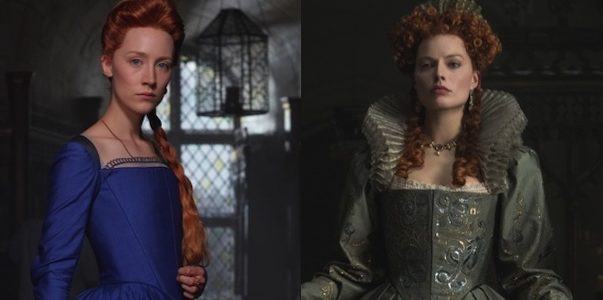
ReelBob: ‘Mary, Queen of Scots’ ★★½
By Bob Bloom
“Mary, Queen of Scots” would have been a much better movie if it had concentrated more on the complex relationship between the Catholic ruler of Scotland and the Protestant leader of England.
Instead, we get a talkative “Masterpiece Theater”-like production that takes a modern, feminist slant to illustrate the difficulties women monarchs had to endure in the 16th century — and to ham-fistedly exclaim what we already know — now, as then, it’s a man’s world.
I don’t object to the perspective chosen by director Josie Rourke and writer Beau Willimon. But their sledgehammer methodology only minimizes what they strive to accomplish.
The movie’s most interesting aspect is the letters exchanged between Mary and Elizabeth, who attempt to forge a bond as sister royals.
But the intrigues, machinations and constant undermining by their male counselors slowly create distrust, fear and, finally, a chasm that neither woman can overcome.
At 16, Mary Stuart was the queen of France. When her husband died a couple of years after their marriage, the widowed Mary returned to Scotland to reclaim her title as queen.
At this time, religious turmoil was dividing her nation between Catholics and Protestants. The majority were Protestants who hated and distrusted Mary for being a woman and a Catholic who, in their view, would put the polices of the pope in Rome above those of her nation.
Almost from the time she sat on the throne, Mary was badgered by her advisors to remarry — preferably an Englishman — to forge a closer relationship with that nation.
At the same time, Elizabeth’s counselors were warning her that if she did not marry and produce an heir, Mary — or her prospective children — could become the presumptive heir to the throne.
Elizabeth refuses to marry because she fears a husband would have ambitions to usurp her position.
Mary does not object to remarrying, but she won’t allow the men advising her to choose her husband.
Both women are squabbled over like chattel to be bartered for political and monarchial purposes.
The movie rests on the performances of Saorise Ronan and Margot Robbie as Mary and Elizabeth.
Ronan’s Mary is proud, a bit arrogant, smart, pragmatic, decisive and merciful. She has a warm heart and truly believes in her ability to rule justly and fairly.
Robbie’s Elizabeth is vain, self-conscious and suspicious, but also smart and pragmatic.
Both command the screen and emit an imperious air, yet with a whiff of vulnerability.
The women seem to sincerely admire each other, but Elizabeth also displays jealousy about Mary’s looks and, later, her motherhood.
“Mary, Queen of Scots” is bogged down by too much exposition and conspiratorial back-and-forth among the supporting players.
What the movie needed was more of Ronan and Robbie.
Historically, the two queens never met. In most iterations of the story — versions were filmed in 1936 with Katharine Hepburn as Mary and Florence Eldridge as Elizabeth and in 1971 with Vanessa Redgrave as Mary and Glenda Jackson as Elizabeth — the two do come face-to-face, which is dramatically sound.
It’s too bad “Mary, Queen of Scots” did not offer more of the correspondence in which the two rulers shared their thoughts about each other, their nations and the burdens of leading.
This “Mary” is more common than regal, which is a shame, because its two protagonists were outsized personalities who helped shape nations.
I am a founding member of the Indiana Film Journalists Association. My reviews appear at ReelBob (reelbob.com) and Rottentomatoes (www.rottentomatoes.com). I also review Blu-rays and DVDs. I can be reached by email at bobbloomjc@gmail.comor on Twitter @ReelBobBloom. Links to my reviews can be found on Facebook, Twitter, Google+ and LinkedIn.
MARY, QUEEN OF SCOTS
2½ stars out of 4
(R), violence, sexual content